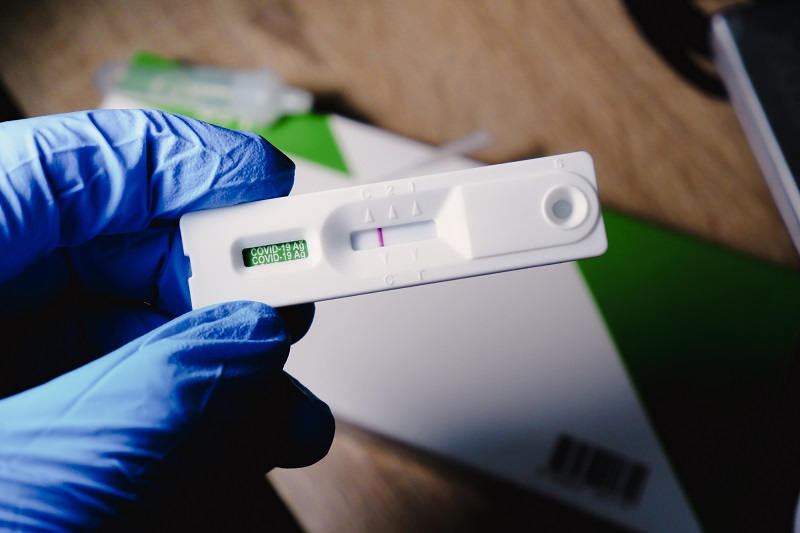New Testing Strips to Make Rapid Antigen Testing as Powerful as PCR Testing
|
By HospiMedica International staff writers Posted on 11 Mar 2024 |

During the onset of the pandemic, individuals experiencing symptoms had to endure lengthy queues for lab-based PCR testing and then wait around two days for the results, to confirm if they were infected with the COVID-19 virus. This process was not only inconvenient but also involved complex and costly logistics, contributing to testing delays and increasing the risk of spreading the disease. Now, a newly developed biosensing technology enables the creation of gene test strips that can match the quality of traditional lab-based tests.
The new technology developed by a team of biomedical engineers at UNSW Sydney (Sydney, Australia) offers test strips that are as accurate as lab-based PCR tests, with the added advantage of quick, on-site disease detection. Described by the researchers as having “PCR in your pocket,” this advancement holds potential for broad applications in biomedical and environmental diagnostics across various sectors, including food, agriculture, and biosafety management. The technology allows for the detection of specific gene sequences at room temperature, using test strips that resemble the familiar RAT Covid test, potentially eliminating the need for long queues at PCR testing centers and drastically reducing costs to a few dollars per test. The test strips could be instrumental in rapidly responding to new pathogens, identifying areas with high antibiotic resistance, or in conservation efforts for endangered species.
The process of achieving PCR-level accuracy with these new test strips involves the creation of minuscule DNA nano-circles, each containing a fragment of the target DNA, such as the COVID virus. These nano-circles, approximately 2 nanometres in size, are then combined with CRISPR/Cas proteins, which are programmed to interact specifically with the target pathogen's DNA. When these proteins encounter the target DNA, they cause the DNA nano-circles to linearize, creating an abundance of 'fake targets.' This method triggers a molecular chain reaction, resulting in a flood of these fake targets that are easily detectable by the test strips, even with minimal presence of the original gene target.
This technology has been demonstrated to accurately detect COVID-19 virus and Helicobacter bacteria, which are responsible for stomach ulcers. Potential applications of this biosensing method extend beyond health diagnostics to include biosecurity (detecting invasive marine species), environmental science (tracking threatened species through DNA testing of environmental samples), and even cancer diagnosis, as demonstrated by the team's successful detection of cancer mutations in clinical patient samples.
“We think we created a new benchmark in biosensing – our gene-based tests will be able to be performed anywhere, anytime, by virtually anyone,” said study author Dr. Fei Deng.
Related Links:
UNSW Sydney
Latest Point of Care News
Channels
Critical Care
view channel
Ingestible Smart Capsule for Chemical Sensing in the Gut Moves Closer to Market
Intestinal gases are associated with several health conditions, including colon cancer, irritable bowel syndrome, and inflammatory bowel disease, and they have the potential to serve as crucial biomarkers... Read moreNovel Cannula Delivery System Enables Targeted Delivery of Imaging Agents and Drugs
Multiphoton microscopy has become an invaluable tool in neuroscience, allowing researchers to observe brain activity in real time with high-resolution imaging. A crucial aspect of many multiphoton microscopy... Read more
Novel Intrabronchial Method Delivers Cell Therapies in Critically Ill Patients on External Lung Support
Until now, administering cell therapies to patients on extracorporeal membrane oxygenation (ECMO)—a life-support system typically used for severe lung failure—has been nearly impossible.... Read moreSurgical Techniques
view channel
Intravascular Imaging for Guiding Stent Implantation Ensures Safer Stenting Procedures
Patients diagnosed with coronary artery disease, which is caused by plaque accumulation within the arteries leading to chest pain, shortness of breath, and potential heart attacks, frequently undergo percutaneous... Read more
World's First AI Surgical Guidance Platform Allows Surgeons to Measure Success in Real-Time
Surgeons have always faced challenges in measuring their progress toward surgical goals during procedures. Traditionally, obtaining measurements required stepping out of the sterile environment to perform... Read morePatient Care
view channel
Portable Biosensor Platform to Reduce Hospital-Acquired Infections
Approximately 4 million patients in the European Union acquire healthcare-associated infections (HAIs) or nosocomial infections each year, with around 37,000 deaths directly resulting from these infections,... Read moreFirst-Of-Its-Kind Portable Germicidal Light Technology Disinfects High-Touch Clinical Surfaces in Seconds
Reducing healthcare-acquired infections (HAIs) remains a pressing issue within global healthcare systems. In the United States alone, 1.7 million patients contract HAIs annually, leading to approximately... Read more
Surgical Capacity Optimization Solution Helps Hospitals Boost OR Utilization
An innovative solution has the capability to transform surgical capacity utilization by targeting the root cause of surgical block time inefficiencies. Fujitsu Limited’s (Tokyo, Japan) Surgical Capacity... Read more
Game-Changing Innovation in Surgical Instrument Sterilization Significantly Improves OR Throughput
A groundbreaking innovation enables hospitals to significantly improve instrument processing time and throughput in operating rooms (ORs) and sterile processing departments. Turbett Surgical, Inc.... Read moreHealth IT
view channel
Printable Molecule-Selective Nanoparticles Enable Mass Production of Wearable Biosensors
The future of medicine is likely to focus on the personalization of healthcare—understanding exactly what an individual requires and delivering the appropriate combination of nutrients, metabolites, and... Read more
Smartwatches Could Detect Congestive Heart Failure
Diagnosing congestive heart failure (CHF) typically requires expensive and time-consuming imaging techniques like echocardiography, also known as cardiac ultrasound. Previously, detecting CHF by analyzing... Read moreBusiness
view channel
Expanded Collaboration to Transform OR Technology Through AI and Automation
The expansion of an existing collaboration between three leading companies aims to develop artificial intelligence (AI)-driven solutions for smart operating rooms with sophisticated monitoring and automation.... Read more


















